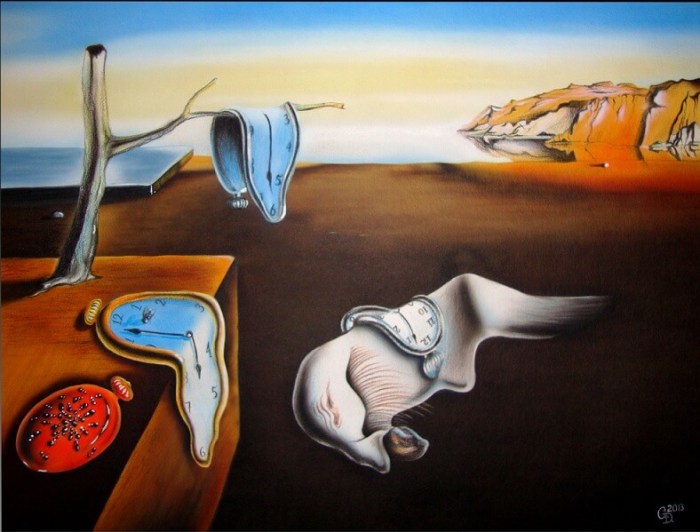Ever wondered what makes a masterpiece a masterpiece? We’re diving deep into the world of iconic art, exploring the stories behind famous paintings, sculptures, and more. Think of it like a VIP tour of the art world, where we’ll uncover the secrets, symbolism, and techniques that make these works stand out.
Get ready to unlock the mysteries and appreciate the genius behind some of the most influential art in history!
From the brushstrokes of Van Gogh to the enigmatic smiles of Leonardo da Vinci, we’ll unravel the stories behind these masterpieces, uncovering their cultural significance and the impact they’ve had on art throughout the ages. We’ll break down the artistic techniques, discuss the hidden meanings, and explore the different styles that have shaped art history.
So, grab your magnifying glass, and let’s dive in!
Exploring Iconic Masterpieces
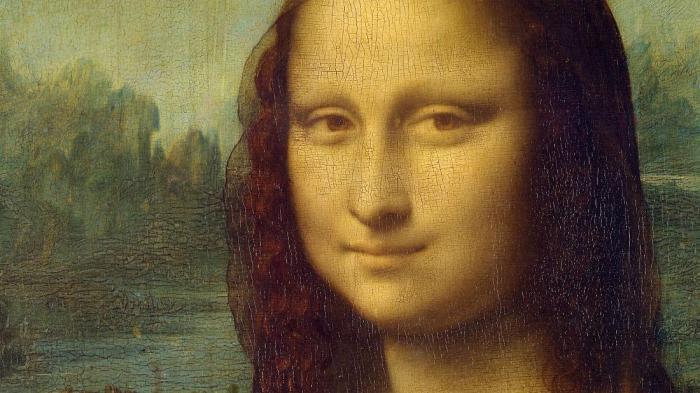
Art is a powerful language that transcends time and culture. From ancient cave paintings to modern installations, masterpieces have captivated audiences for centuries, leaving an enduring legacy on our collective imagination. In this exploration, we’ll delve into the history and context behind five iconic artworks, examining the techniques and symbolism that make them truly remarkable.
So you’re into art, huh? Like, really into it? Then you gotta check out “Masterpieces of Art Explained.” It’s all about those famous paintings, sculptures, and everything in between, breaking down the finer details so you can really understand what’s going on.
And hey, maybe you’ll even learn a few new words to impress your friends, like the ones you’ll find on Words That Mingle. But let’s be real, sometimes the best way to appreciate art is just to let it wash over you, you know?
Like a really good song. Get lost in the colors, the shapes, the stories, and let your imagination run wild. That’s what makes art so awesome.
The Birth of Venus by Sandro Botticelli
The Birth of Venus, painted around 1482-1485, is a quintessential Renaissance masterpiece that captures the spirit of humanism and the revival of classical ideals. The painting depicts the goddess Venus emerging from a giant scallop shell onto the shore, greeted by the Zephyrs, the west wind, and Horae, the goddesses of the seasons.
The painting’s composition is striking, with Venus standing at the center, her body gracefully rendered in a flowing, S-shaped curve. Botticelli employed the technique of tempera on canvas, a medium that allowed for meticulous detail and vibrant colors. The artist’s use of light and shadow creates a sense of depth and volume, while the soft, flowing lines of Venus’s body convey a sense of ethereal beauty.
The Birth of Venus is not merely a depiction of a mythological figure; it’s a celebration of beauty, rebirth, and the power of nature. The painting’s symbolism is rich and layered, reflecting the cultural and intellectual climate of the Italian Renaissance.
Venus, the goddess of love and beauty, represents the idealized feminine form and the power of human creativity. The shell, a symbol of rebirth and transformation, signifies Venus’s emergence from the sea, representing the beginning of a new era.
The Zephyrs, blowing gently upon Venus, symbolize the wind of change that swept through Europe during the Renaissance. The painting’s impact on art history is undeniable. It has inspired countless artists and continues to be admired for its beauty, symbolism, and enduring power.
Delving into Artistic Styles
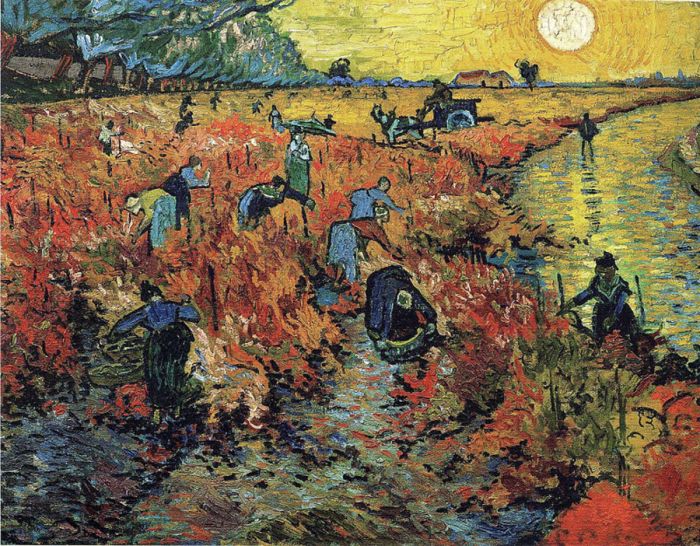
Art is a kaleidoscope of styles, each a unique expression of the artist’s vision, influenced by their time, culture, and personal experiences. Exploring these styles allows us to delve deeper into the meaning behind the masterpieces and understand the artists’ creative journeys.
Comparing Artistic Styles
Understanding the unique qualities of each style is key to appreciating the diverse world of art. Let’s compare and contrast the styles of three renowned artists: Vincent van Gogh, Pablo Picasso, and Frida Kahlo.
- Vincent van Gogh, a Dutch post-impressionist painter, is known for his bold use of color, swirling brushstrokes, and expressive depictions of nature and human emotion. His iconic “Starry Night” exemplifies his signature style, featuring swirling, vibrant colors and dynamic brushstrokes that capture the movement of the night sky.
Van Gogh’s style is characterized by a sense of intensity and emotional depth, often reflecting his personal struggles and his fascination with the beauty of the natural world.
- Pablo Picasso, a Spanish artist who co-founded the Cubist movement, revolutionized art with his fragmented and geometric approach to form. His famous painting “Guernica” is a powerful anti-war statement, showcasing his signature Cubist style, where figures and objects are broken down into geometric shapes and reassembled in a fragmented manner.
So you’re into the whole art scene, huh? Digging those brushstrokes and hidden meanings? Well, maybe you need a little somethin’ to get your creative juices flowin’. Check out Western Vibes Advanced Coloring Book Book Three , it’s like therapy for your inner artist.
You can channel those vibes into your own masterpiece, whether it’s a Van Gogh-inspired sunset or a Picasso-esque portrait of your pet chihuahua.
Picasso’s style is known for its intellectual rigor, experimentation, and its exploration of multiple perspectives.
- Frida Kahlo, a Mexican painter, is renowned for her self-portraits that explore themes of identity, pain, and the human condition. Her work is characterized by a vibrant palette of colors, often incorporating traditional Mexican imagery and symbolism. Her self-portrait “The Two Fridas” exemplifies her style, featuring two versions of herself, one with a European heart and the other with a Mexican heart, symbolizing her dual identity.
Kahlo’s style is known for its raw honesty, emotional intensity, and its celebration of Mexican culture.
Historical and Social Influences
These artists’ styles were shaped by the historical and social contexts in which they lived and worked.
- Van Gogh‘s work was influenced by the Impressionist movement, which emphasized capturing the fleeting effects of light and color. However, he pushed the boundaries of Impressionism with his bold and expressive brushstrokes, creating a more emotional and personal style.
Van Gogh’s style also reflected his fascination with the natural world and his struggles with mental illness, which found expression in his art.
- Picasso‘s Cubist style was a reaction against the traditional representational art of the late 19th century. Inspired by African art and the fragmented forms of Cezanne, Picasso challenged the conventional ways of seeing and representing the world. His work was also influenced by the political and social upheaval of the early 20th century, as seen in his anti-war masterpiece “Guernica”.
- Kahlo‘s work was deeply influenced by her personal experiences, including her physical pain and her Mexican heritage. Her style incorporated elements of Mexican folk art, Surrealism, and Symbolism, reflecting her exploration of identity, gender, and the human condition. Kahlo’s work was also influenced by the social and political changes in Mexico during the 20th century, as she became a symbol of female empowerment and cultural pride.
Visual Table of Artistic Styles
| Artist | Style | Key Characteristics | Example Masterpiece |
|---|---|---|---|
| Vincent van Gogh | Post-Impressionism | Bold colors, swirling brushstrokes, emotional intensity | “Starry Night” |
| Pablo Picasso | Cubism | Fragmented forms, geometric shapes, multiple perspectives | “Guernica” |
| Frida Kahlo | Surrealism, Symbolism, Mexican folk art | Vibrant colors, self-portraits, exploration of identity and pain | “The Two Fridas” |
The Impact of Masterpieces
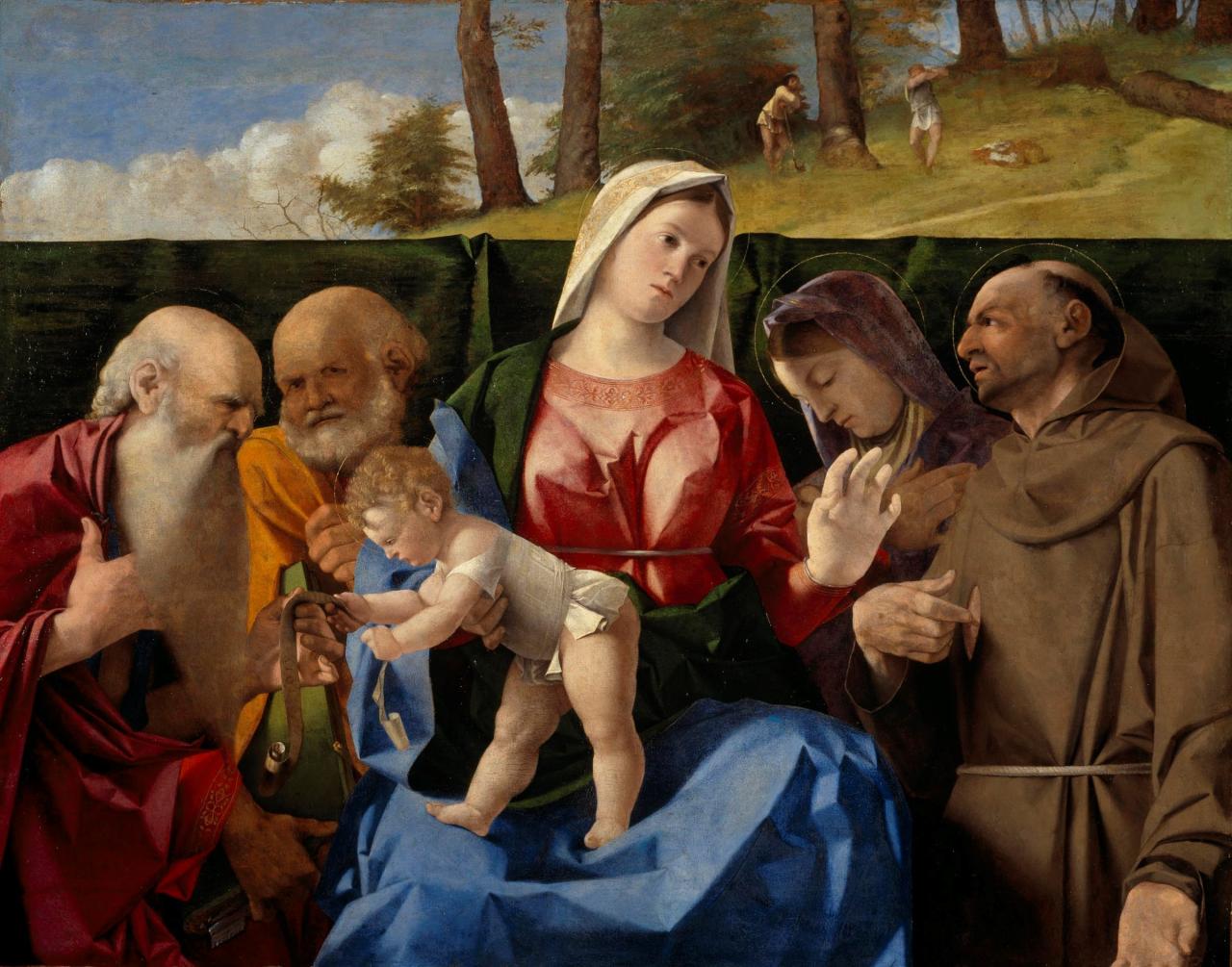
Masterpieces aren’t just pretty pictures; they’re like the Avengers of art history, shaping the way we see and create art. They’ve influenced countless artists, sparked movements, and inspired interpretations across cultures and time. Think of them as the ultimate artistic remixes!
Influence on Subsequent Artists and Art Movements
These masterpieces have a serious “follow-me” vibe, inspiring artists to push boundaries and try new things. Like a ripple effect, their impact echoes throughout art history.
- Michelangelo’s Sistine Chapel ceiling(1508-1512): This bad boy changed the game for Renaissance art. It wasn’t just the size, but the sheer skill and realism of the figures that made it a game-changer. Artists like Raphael, who was in awe of Michelangelo’s work, took inspiration and developed their own styles, further elevating Renaissance art.
- Vincent van Gogh’s Starry Night(1889): This masterpiece is like the poster child for Expressionism, a movement that emphasized emotion and personal expression. Van Gogh’s swirling brushstrokes and vibrant colors gave artists a whole new way to express themselves, leading to the development of modern art movements like Fauvism and Abstract Expressionism.
- Pablo Picasso’s Guernica(1937): This powerful painting, depicting the horrors of war, became a symbol of peace and anti-war sentiment. It inspired countless artists to use their work to address social and political issues, paving the way for social realism and political art.
Interpretations and Reinterpretations in Different Cultural Contexts
Masterpieces aren’t just confined to their original context; they’re like cultural memes, sparking interpretations and reinterpretations across cultures. Think of it as a global artistic conversation!
Ever wonder what the big deal is with the Mona Lisa’s smile? Or what’s up with that starry night sky? You’re not alone! Download And Listen Here for a cool podcast that breaks down all the secrets behind those iconic masterpieces.
Get ready to see art in a whole new light, like a total art buff!
- Leonardo da Vinci’s Mona Lisa(1503-1506): This enigmatic smile has captivated audiences for centuries, inspiring countless interpretations and parodies. From Andy Warhol’s pop art versions to memes and social media filters, the Mona Lisa has transcended time and culture, becoming a global icon.
- The Great Wave off Kanagawa(c. 1830-1833) by Katsushika Hokusai: This iconic woodblock print, depicting a giant wave crashing over Mount Fuji, has inspired artists and designers worldwide. Its powerful imagery has been used in everything from fashion to architecture, showcasing its enduring influence across different cultural contexts.
- Gustav Klimt’s The Kiss(1907-1908): This masterpiece, with its vibrant gold and swirling patterns, has been interpreted as a symbol of love, passion, and the beauty of the human form. It has inspired countless reinterpretations in different cultures, showcasing the universality of love and desire.
Chronological Timeline of Art History
Imagine a timeline of art history, with these masterpieces as the key milestones. They’re like the big events that shaped the trajectory of art, showcasing the evolution of artistic styles and ideas.
“The history of art is not a linear progression but a series of dialogues, debates, and reinterpretations.”
Robert Hughes
Yo, ever stare at a masterpiece and wonder how the heck they did that? Like, did they just magically make brushstrokes turn into a Mona Lisa? Well, maybe not magic, but there’s definitely a whole lotta skill involved. And you know what?
You can learn to draw too, even if you’re a total beginner! Check out this awesome guide, How To Draw Cute Animals For Kids Learn To Draw Dogs Cats And more In 4 Simple Steps With This Beginner Friendly Step By Step Drawing Book (How To Draw Series) , to start doodling your own masterpieces, one cute critter at a time.
Who knows, maybe you’ll be the next big art sensation!
- Ancient Greece(c. 800 BCE – 146 BCE): The iconic marble sculptures of Ancient Greece, like the Venus de Milo and the Doryphoros, set the stage for classical art, emphasizing idealized beauty and human form.
- Renaissance(14th – 16th centuries): This period saw a revival of classical art, with masterpieces like Leonardo da Vinci’s Mona Lisaand Michelangelo’s Davidpushing the boundaries of realism and human anatomy.
- Baroque(17th century): The dramatic and theatrical Baroque style, exemplified by Caravaggio’s The Calling of Saint Matthewand Bernini’s Ecstasy of Saint Teresa, emphasized emotion and movement.
- Impressionism(late 19th century): This movement, pioneered by artists like Claude Monet and Pierre-Auguste Renoir, focused on capturing the fleeting effects of light and color, as seen in Monet’s Impression, Sunrise.
- Modernism(late 19th – mid 20th century): This period saw a rejection of traditional artistic conventions, with movements like Expressionism, Cubism, and Surrealism pushing the boundaries of art. Key masterpieces include van Gogh’s Starry Night, Picasso’s Guernica, and Salvador Dali’s The Persistence of Memory.
- Contemporary Art(present): This era encompasses a diverse range of styles and movements, influenced by previous masterpieces and contemporary issues. From Pop Art to Minimalism to Conceptual Art, contemporary art continues to evolve and challenge our understanding of art.
Closing Summary
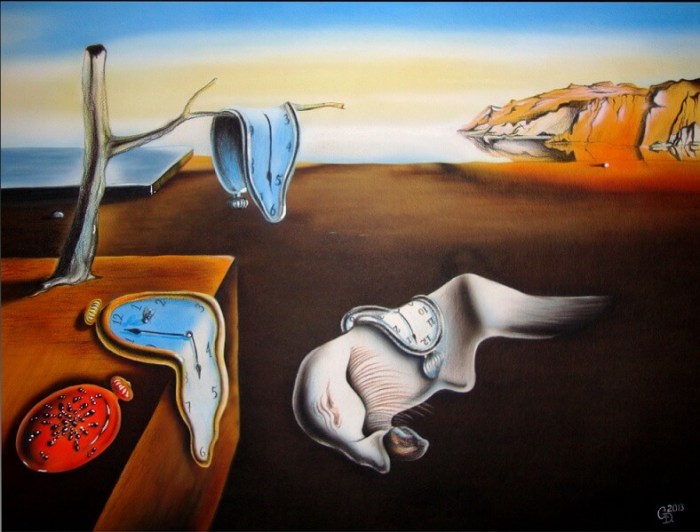
By exploring the world of art, we gain a deeper understanding of ourselves, our culture, and the human experience. These masterpieces offer a window into different times and perspectives, reminding us that art is a powerful language that transcends borders and generations.
So, next time you find yourself standing before a famous artwork, remember the stories, the techniques, and the impact that make it a true masterpiece. Let the art speak to you, and let your imagination run wild!
FAQ Overview
What are some examples of iconic masterpieces?
Some iconic masterpieces include the Mona Lisa by Leonardo da Vinci, The Starry Night by Vincent van Gogh, and The Scream by Edvard Munch.
How can I learn more about art history?
You can visit museums, read books and articles, watch documentaries, and take online courses to learn more about art history. Many museums offer free tours and educational programs. There are also numerous online resources, such as Khan Academy and the Metropolitan Museum of Art’s website, that provide in-depth information about art history.

